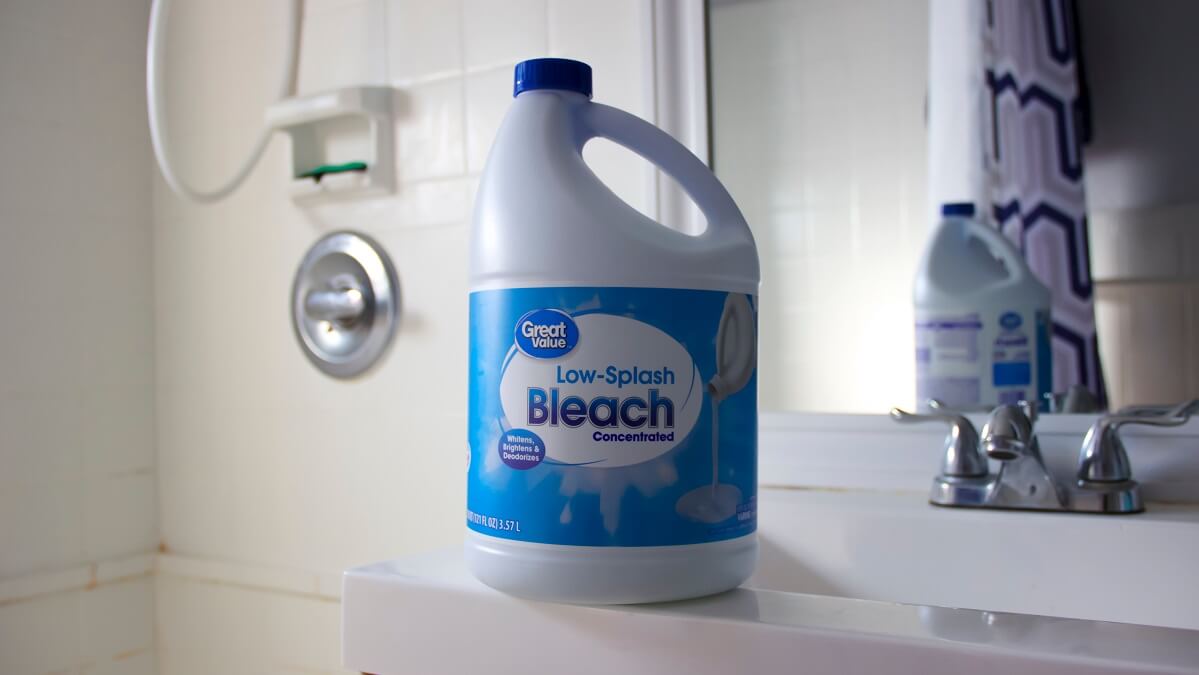Bleach is one of the most effective and least expensive disinfectants around, but it pays to remember it’s not an all-purpose cleaner. Bleach does a fantastic job of killing germs, removes tough stains and can whiten clothing, but it doesn’t really remove dirt and residue from surfaces.
Sanitising with bleach isn’t scary as long as you know how to do it, and what to avoid. Here are the dos and don’ts of using bleach in the house.
Don’t mix bleach with ammonia
As a general rule, it’s good to avoid mixing bleach with anything except water really. Mixing bleach and ammonia forms a toxic gas called chloramine that can damage tissue in the eyes, throat, nose and lungs. Depending on how much of the gas is released and the length of time you’re exposed to it, inhaling chloramine gas can make you very sick and even cause death.
The most common household cleaners that contain ammonia are window and glass cleaners, multi-purpose cleaners, oven cleaners, floor waxes and toilet bowl cleaners.
Don’t overuse it
It can be tempting to reach for bleach for peace of mind, especially in the midst of a pandemic, but more isn’t always better.
Even when diluted, too much bleach can be harsh on surfaces, so save it for high touchpoints such as doorknobs and light switches. Do reach for it to whiten laundry or when cleaning body fluids such as blood, vomit or faeces though.
Don’t put too much with your laundry
Bleach can fight stains and whiten your whites but there is such a thing as too much bleach. Never pour it directly onto fabrics and don’t use more than directed with your laundry, this can impact the strength and quality of the fibres over time.
Always check the directions to ensure bleach can be used in that situation, it’s not good for spandex, wool, silk, or leather. And if you’re still unsure, do a patch test. Dip a Q tip into the bleach/water solution and dab on an inside seam. If the colour remains, you should be safe.
Don’t pour it down the drain
Undiluted bleach can damage pipes or create dangerous fumes if it reacts with other substances in the pipes. A better option would be to fill the sink or bath partway with water, add a splash of bleach, let it sit for 10 minutes then pull the plug (whilst wearing gloves) and let it rinse down the drain.
Alternatively, you could try half a cup of baking soda followed by a rush of hot water to keep the drains clean.
Don’t use an old bottle
Though often sold in large containers that might lead you to believe it can last forever, bleach – a sodium hypochlorite solution – does expire over time, eventually degrading into plain old saltwater. It will last for one year when stored correctly but starts degrading after around six months.
If you’re not sure when you bought it, look for a string of letters and numbers on the label. For example, if you see MR20099, that means it was made on the 99th day of 2020.
Don’t use it on any food
Bleach is used in commercial food production to sanitise food but should not be used on food in the household, it’s very difficult to get the exact proportions right.
The best defence against germs in your food is to cook and store it properly or, in the case of fresh produce, to rinse it under cold water for a minute or two.
Don’t mix with acids
Avoid mixing beach with any acids such as vinegar or drain cleaner. It will make chlorine gas which is dangerous to breathe and can cause sickness or damage the airways.
Don’t use it on metal
Bleach is corrosive and can erode metal surfaces such as copper, aluminium and other metals. It contains ingredients that serve as oxidants during the cleaning process, so materials such as stainless steel can become oxidised and corroded when exposed to bleach.
Do clean the surface before disinfecting
A thick layer of dust and dirt can protect the germs below so clean the surface with soap and water before disinfecting.
Do open windows and doors
Always use bleach in a well-ventilated area, such as a room with an open window. Turn on a fan to help get rid of the fumes.
Do protect yourself
Bleach can burn your skin so cover up with eye protection, gloves and a face mask. You should also cover your feet and wear long sleeves and pants. Avoid wearing anything special as bleach can stain clothes.
Do you use bleach in the home? When do you reach for it? Why not share your tips in the comments section below?
Also Read: Kitchen cleaning mistakes

